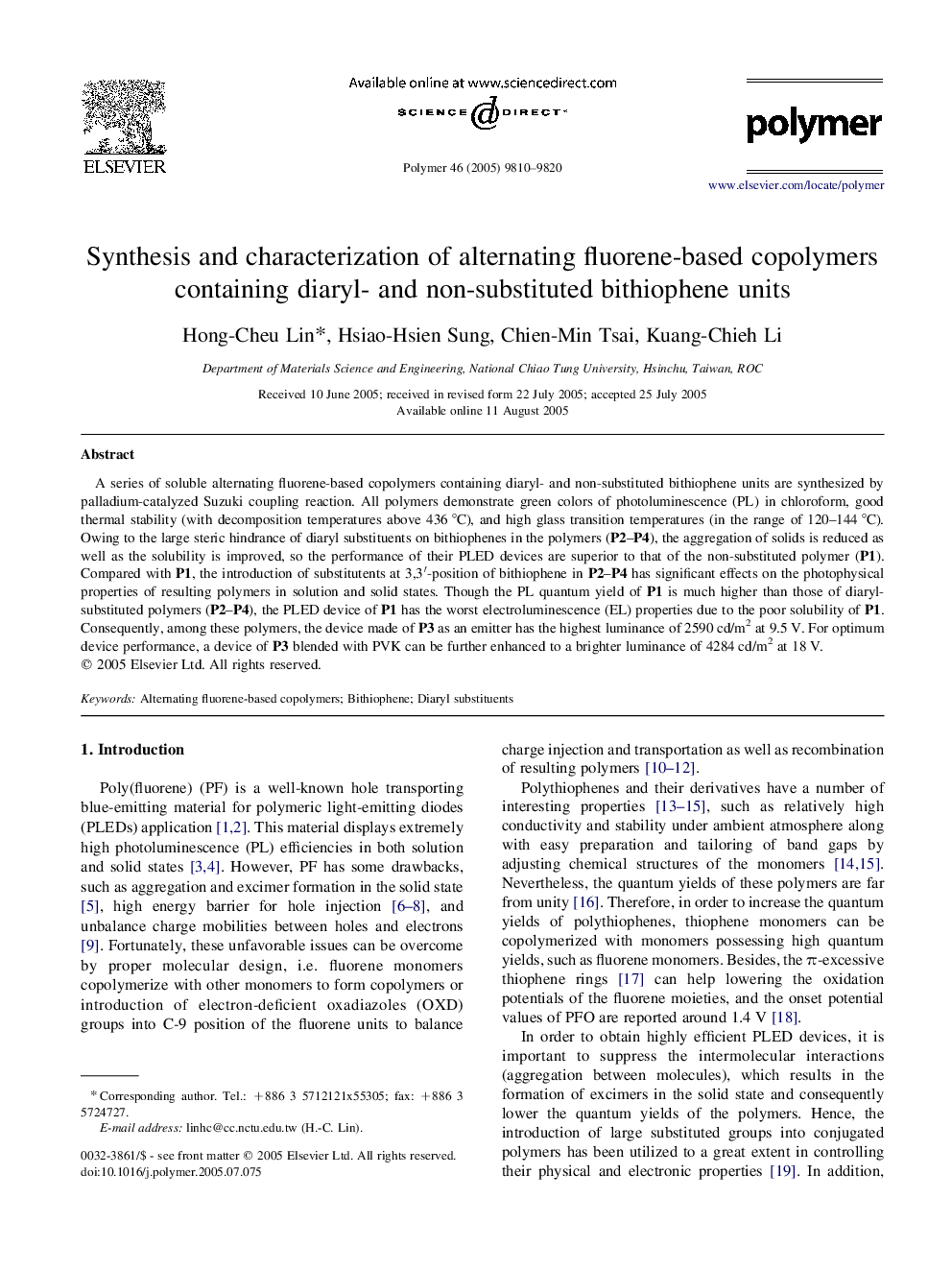| Article ID | Journal | Published Year | Pages | File Type |
|---|---|---|---|---|
| 5189851 | Polymer | 2005 | 11 Pages |
A series of soluble alternating fluorene-based copolymers containing diaryl- and non-substituted bithiophene units are synthesized by palladium-catalyzed Suzuki coupling reaction. All polymers demonstrate green colors of photoluminescence (PL) in chloroform, good thermal stability (with decomposition temperatures above 436 °C), and high glass transition temperatures (in the range of 120-144 °C). Owing to the large steric hindrance of diaryl substituents on bithiophenes in the polymers (P2-P4), the aggregation of solids is reduced as well as the solubility is improved, so the performance of their PLED devices are superior to that of the non-substituted polymer (P1). Compared with P1, the introduction of substitutents at 3,3â²-position of bithiophene in P2-P4 has significant effects on the photophysical properties of resulting polymers in solution and solid states. Though the PL quantum yield of P1 is much higher than those of diaryl-substituted polymers (P2-P4), the PLED device of P1 has the worst electroluminescence (EL) properties due to the poor solubility of P1. Consequently, among these polymers, the device made of P3 as an emitter has the highest luminance of 2590 cd/m2 at 9.5 V. For optimum device performance, a device of P3 blended with PVK can be further enhanced to a brighter luminance of 4284 cd/m2 at 18 V.
